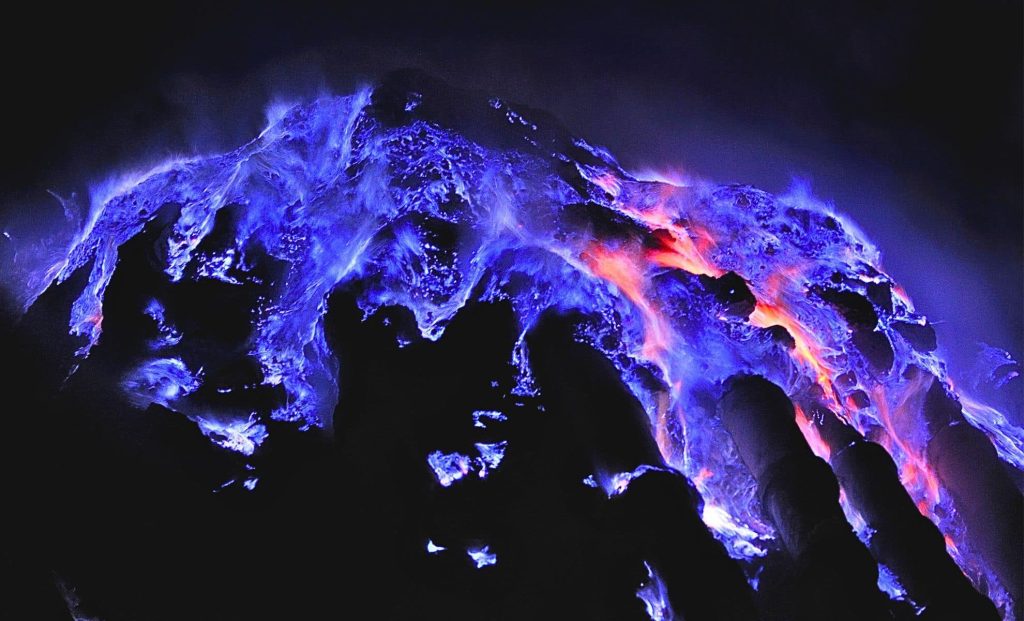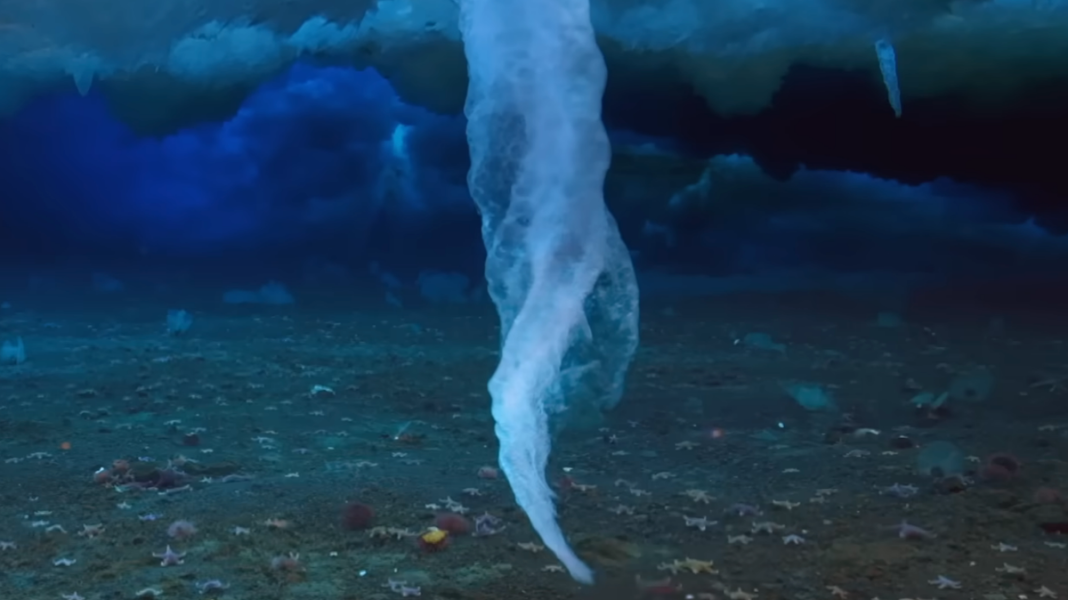Why Is This Indonesian Volcano Spewing Blue Lava Instead of Red? Scientists Can’t Believe Their Eyes! – The Daily Galaxy –Great Discoveries Channel

At night, deep in Indonesia, a volcano glows with an eerie blue fire, unlike anything seen before. The flames slither down its slopes, casting an otherworldly glow that seems almost too surreal to be real. Scientists have uncovered the shocking truth behind this phenomenon, but few dare to get too close.In the eastern reaches of Java, Indonesia, the Kawah Ijen volcano stuns the world with a spectacle of neon-blue flames lighting up its crater at night. While it appears as if the volcano is spewing blue lava, the truth is even more fascinating. This rare phenomenon, combined with one of the most acidic lakes on Earth and a grueling sulfur mining industry, makes Kawah Ijen one of the most extraordinary and perilous volcanic sites on the planet.Despite the mesmerizing sight, the blue glow seen at Kawah Ijen is not actual lava, reports Smithsonianmag. Instead, it results from the combustion of sulfuric gases. When sulfur-rich gases escape from the volcano’s cracks at temperatures reaching 600°C (1,112°F), they ignite upon contact with oxygen, producing vibrant blue flames.Sometimes, molten sulfur continues to burn as it flows down the slopes, creating the illusion of glowing blue rivers. This spectacle is only visible at night since daylight overpowers the luminescent effect. While other volcanoes worldwide also release sulfuric gases, Kawah Ijen’s chemical composition and gas concentrations make this phenomenon particularly intense.At the summit of Kawah Ijen lies a surreal turquoise crater lake, which holds the title of the largest acidic lake on Earth. Its extreme acidity is due to high levels of sulfuric and hydrochloric acid, giving it a pH as low as 0.13 in its center—so acidic that it can dissolve metals.This lake isn’t just a scientific curiosity; it’s also a source of environmental concern. The Banyupahit River, which originates from the lake, carries its acidic waters downstream, affecting aquatic life and vegetation. Despite its stunning appearance, the lake is extremely dangerous, and prolonged exposure to its acidic fumes can cause severe health issues.Beyond its natural beauty, Kawah Ijen is a working volcano, where hundreds of sulfur miners risk their lives daily. The volcano’s fumeroles release thick clouds of toxic gases, and miners use simple pipes to channel and condense the sulfur, allowing it to solidify into bright yellow blocks.These workers then break the sulfur by hand and carry loads of up to 90 kilograms (200 lbs) down the steep crater—sometimes multiple times per day. Without proper protective equipment, many suffer from respiratory diseases due to prolonged exposure to hydrogen sulfide and sulfur dioxide.With an average life expectancy of only 40 years, these miners endure some of the harshest working conditions in the world, making Kawah Ijen not just a place of natural wonder, but also of human struggle.The blue flames of Kawah Ijen have become a major tourist attraction, drawing adventurers from all over the world. Guided treks begin in the early hours of the morning, allowing visitors to witness the mesmerizing blue glow before sunrise.However, the rising popularity of the site comes with environmental and safety concerns. Unregulated tourism and increasing foot traffic threaten the delicate ecosystem of the acidic lake and sulfur fields. At the same time, tourists venturing too close to the flames without proper gas masks risk severe respiratory distress from the toxic fumes.Efforts are being made to ensure that conservation measures are put in place while allowing sustainable tourism, but striking this balance remains a challenge.Kawah Ijen is a land of extremes, where fire burns blue, water is acid, and miners battle deadly gases daily. This volcanic marvel, with its otherworldly glow and hazardous conditions, showcases the delicate and often perilous balance between nature’s breathtaking beauty and its raw, destructive power.Whether seen as a scientific curiosity, a dangerous workplace, or a photographer’s dream, Kawah Ijen remains one of the most fascinating volcanoes on Earth—a place where the planet’s most intense elements collide in a fiery dance of chemistry, geology, and human endurance.Comment Save my name, email, and website in this browser for the next time I comment.
© 2024 | Daily Galaxy | All rights reserved






